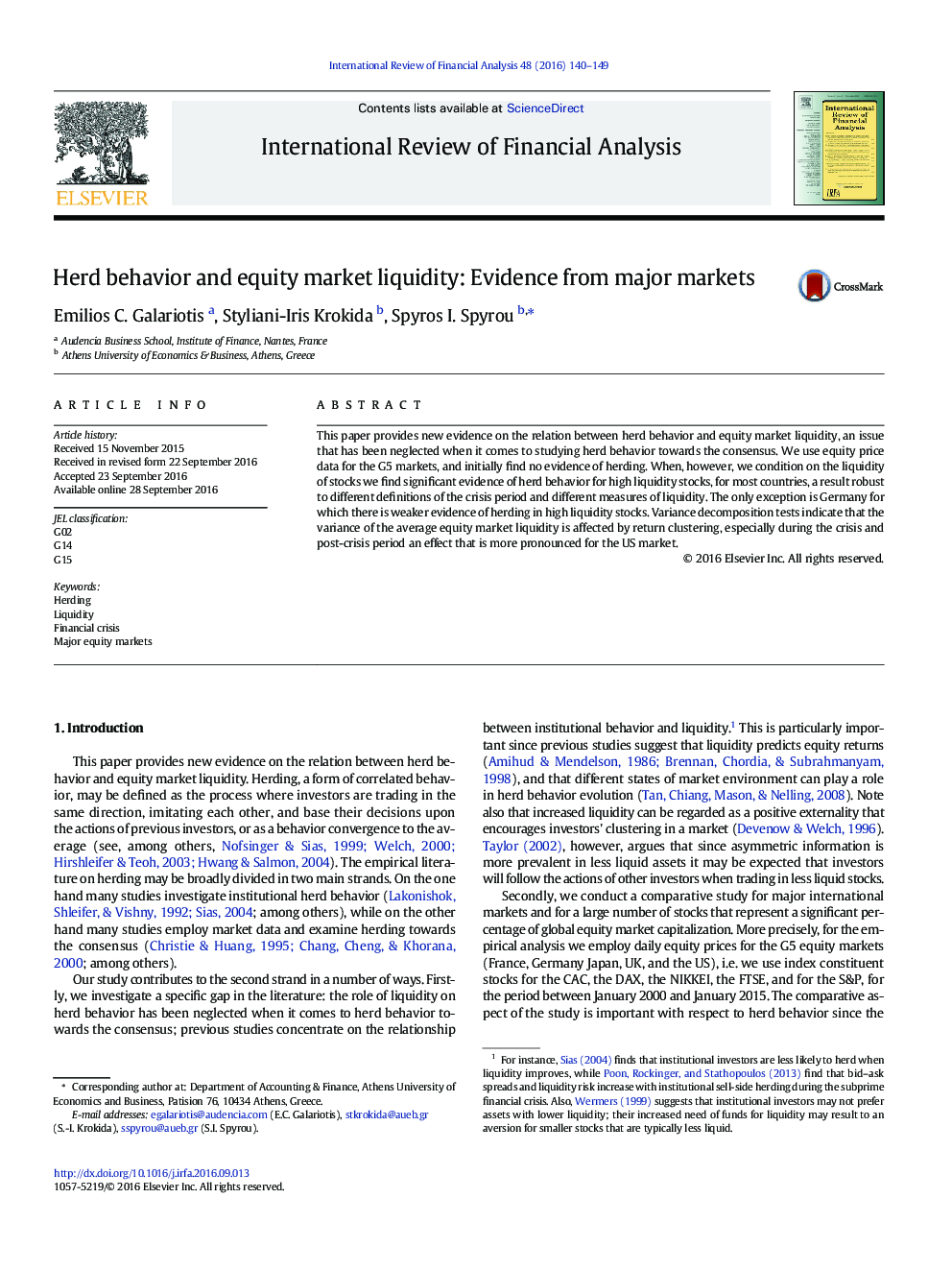| کد مقاله | کد نشریه | سال انتشار | مقاله انگلیسی | نسخه تمام متن |
|---|---|---|---|---|
| 5084611 | 1477905 | 2016 | 10 صفحه PDF | دانلود رایگان |
کلمات کلیدی
1.مقدمه
2. مرور مختصر مطالعات قبلی
3. داده و روش تحقیق
3.1. تعیین فعالیت توده ای
جدول 1. آمار توصیفی.
جدول 2. همبستگی سریالی در آزمون های ریشه واحد و تاخیر.
3.2. اندازه گیری نقدینگی
جدول 3. آزمون برای رفتار توده در بازار سهام.
جدول 4. رفتار توده ای و نقدینگی.
شکل 1. انحراف متوسط سطح مقطع و بازده نمونه بازار.
4. نتایج
شکل 2. انحراف متوسط سطح مقطع و نقدینگی.
جدول 5. تجزیه واریانس متغییرها.
جدول 6. آزمون های علیت Granger بین CSAD و نقدینگی متوسط.
شکل 3. نوسان S&P GARCH.
4.1. آزمون های بسیار: تجزیه واریانس
4.2. آزمون های علیت Granger
جدول 7. رفتار توده ای و نقدینگی- آزمون استوار.
جدول 8. رفتار توده ای و نقدینگی-آزمون استوار: اختلاف قیمت خرید و فروش
4.3. آزمون استوار
5. نتیجه گیری
- New evidence on the relation between herd behavior and equity market liquidity
- This issue that has been neglected when it comes to studying herd behavior towards the consensus.
- We use equity price data for the G5 markets.
- We find significant evidence of herd behavior for high liquidity stocks, for most countries.
- The result is robust to different definitions of the crisis period and different measures of liquidity.
This paper provides new evidence on the relation between herd behavior and equity market liquidity, an issue that has been neglected when it comes to studying herd behavior towards the consensus. We use equity price data for the G5 markets, and initially find no evidence of herding. When, however, we condition on the liquidity of stocks we find significant evidence of herd behavior for high liquidity stocks, for most countries, a result robust to different definitions of the crisis period and different measures of liquidity. The only exception is Germany for which there is weaker evidence of herding in high liquidity stocks. Variance decomposition tests indicate that the variance of the average equity market liquidity is affected by return clustering, especially during the crisis and post-crisis period an effect that is more pronounced for the US market.
Journal: International Review of Financial Analysis - Volume 48, December 2016, Pages 140-149
